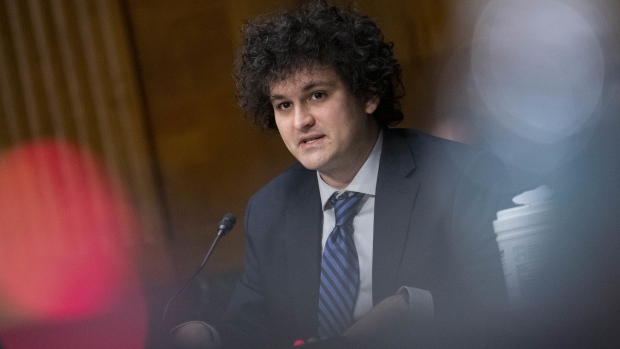Nov 10, 2022
Bankman-Fried’s Alameda Research Is Winding Down Trading
, Bloomberg News

(Bloomberg) -- Fallen crypto mogul Sam Bankman-Fried is shutting down Alameda Research, the trading house at the heart of his digital-asset empire, as he seeks last-ditch financing to save his troubled crypto exchange FTX.com.
Bankman-Fried, who on Wednesday told investors that FTX may have to seek bankruptcy if it doesn’t get a rescue, announced the move in a series of tweets on Thursday, adding that FTX is “spending the week doing everything we can to raise liquidity.”
Bankman-Fried’s downfall was swift, with a hastily-agreed rescue by rival Binance Holdings Ltd. falling apart, US authorities looking into FTX’s dealings and a prominent investor writing down its stake in the company to zero. Alameda Research was a crucial part of his crypto empire, although questions around its balance sheet had been swirling after an article by CoinDesk earlier this month.
“There is no way that Alameda could operate right now, even if FTX wasn’t in deep trouble,” said Colin Platt, a cryptocurrency consultant. “It is a business that relies on having the confidence of its counterparties, and confidence in Alameda has been irreparably harmed.”
FTX Hurtles Toward Bankruptcy With $8 Billion Hole, US Probe
Co-founded by Bankman-Fried in 2017, Alameda started off as a lucrative arbitrage trading firm and quickly grew into one of the largest market makers of digital tokens globally. The Bahamas-based firm also became a force across the entire crypto ecosystem, with investments in decentralized lending, venture-backed companies and projects and even, it seemed, providing distressed lending.
FTX-Alameda Relationship
As its influence spread, so did concerns over potential conflicts of interest, particularly its relationship with FTX and the lack of sufficient regulatory guardrails compared to traditional finance.
Alameda was originally based in Berkeley, California, before uprooting for Hong Kong and ultimately the more crypto-friendly Caribbean.
Bankman-Fried’s announcement that Alameda is closing capped a roller-coaster week that saw his creation come apart in a matter of days and sparked a rout in the broader market. The trouble started on Sunday, when Changpeng “CZ” Zhao, the Binance founder and chief rival, announced plans to sell about $530 million worth of FTT, the native coin of FTX.
FTX saw about $5 billion of withdrawals that day, Bankman-Fried said in his Thursday Twitter thread. He also miscalculated his sense of “users’ margin” on the platform, he tweeted.
On Tuesday, Zhao and Bankman-Fried both took to Twitter to reveal that they’d reached a tentative deal for Binance to buy FTX. A day later, Zhao pulled out and Bankman-Fried dropped the bombshell to FTX.com investors that it faced a shortfall of up to $8 billion, according to a person with knowledge of the matter.
FTX is now in the process of trying to raise fresh liquidity, “every penny” of which will go toward making users whole alongside investors, he added. FTX.US isn’t financially impacted, and is “100% liquid,” he said.
Because of its wide reach in the crypto industry, the closure of Alameda could ripple through markets. The sudden collapse of the TerraUSD stablecoin project in early may set in motion a cascade of failures that reverberated through the sector for months.
“They are a major trading counterparty globally, depending on how they shut down, what kind of assets and positions they have it can have very very large effect,” said Rosario Ingargiola, the CEO of market infrastructure firm Bosonic, said of Alameda.
Companies in deep financial distress must be careful about selling assets. If the company winds up in bankruptcy, scorned creditors can try to have recent deals unwound, arguing that they weren’t in the best interest of everyone with money at stake.
--With assistance from Emily Nicolle and Anna Irrera.
(Updates with background on Alameda.)
©2022 Bloomberg L.P.





